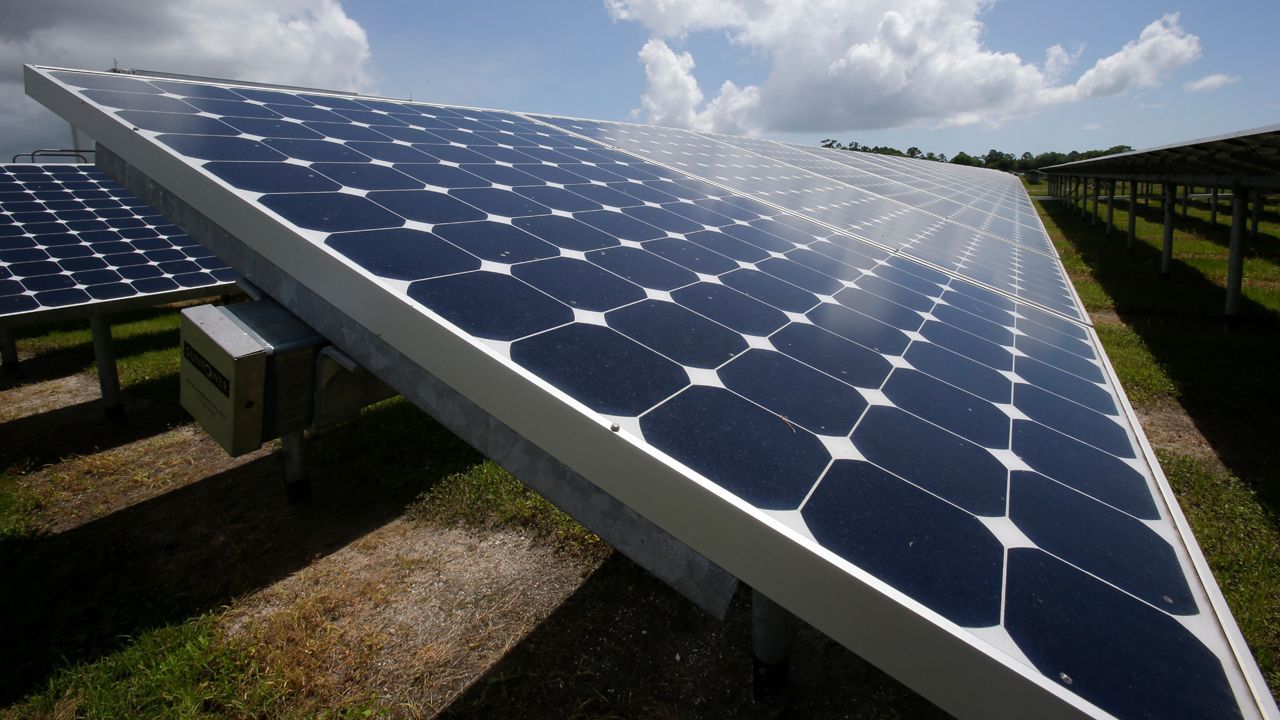Solar installations reached a record high in the U.S. last year, and Florida’s growth has now put the Sunshine State as the top state in the Southeast and just behind California and Texas nationally in solar capacity.
What You Need To Know
- According to this new report, Florida trails only California and Texas in the production of solar energy
- The state's investor-owned utilities were resistant to expanding solar power not that long ago, but costs have gone down tremendously in recent years
- TECO and Duke Energy in the Tampa Bay area say that solar will represent about 14% of their energy portfolion in the next few years
“Florida has now surpassed North Carolina as the Southeast solar leader, and that’s a big deal because up until very recently North Carolina had the second most solar in the entire country, behind California,” says Bryan Jacob, the solar program director with the Southern Alliance for Clean Energy (SACE). “Texas has overtaken them, and now Florida has as well.”
SACE published that information in their fourth annual “Solar in the Southeast” report last week.
Another report, from the Solar Energy Industries Association and Wood Mackenzie Power & Renewable, shows Florida still slightly trailing North Carolina in solar rankings in fourth place.
Florida’s investor-owned-utilities have raised their game in terms of adding solar to their electricity portfolio in recent years, mostly because of the reduction in price, but also because there is increased demand from their customer base.
‘In just the last few years, we have significantly expanded our solar presence,” says Tampa Electric spokesperson Cherie Jacobs. “Right now, about 7% of our energy comes from the sun, and in the next two years, that is going to double to about 14 % of the energy that Tampa Electric produces…that’s enough to provide electricity to 200,000 homes.”
Removing restrictions on leased solar systems has also been a huge boost in Florida, energy analysts say.
In 2018 the Florida Public Service Commission changed policies that were preventing companies from selling home-based solar lease products, making rooftop solar much more affordable by allowing customers to access that alternative source of energy with little or no upfront costs.
“That allowed these leasing models to work which have been very effective in other places, like North Carolina and South Carolina,” says Jacob. “And so for people who couldn’t afford the upfront costs themselves, because sometimes you’re talking $20,000/$25,000/$30,000 to put a system on your roof…we’re trying to eliminate those obstacles, and make sure that solar is available for everyone. And leasing helps do that.”
In 2020, small-scale solar capacity in Florida grew 57% because of that change, according to the U.S. Energy Information Administration.
Companies like TECO and Duke Energy also have programs that allow customers who want solar power but for some reason can’t put panels on their roof to still get access. In the case of Duke, it’s their “Clean Energy Connection” program which allow participating customers to subscribe to blocks of solar generation equivalent to 1 kilowatt (kW) of solar power per block and receive credits based on their subscription size and solar energy produced each month.
“Over time, they’re actually able to decrease their bill as they join in that program,” says Duke spokesperson Ana Gibbs.
States like North Carolina have had their utilities go green quicker than they might have been inclined to because of Renewable Portfolio Standards (RPS), which require a certain percentage of energy must come from alternative sources. Attempts by Democrats to implement that in Florida have gone nowhere in recent years.
“Florida’s energy is mostly produced by burning natural gas today, and that natural gas is bought from out of state,” says Sean Gallagher, the VP of state and regulatory affairs with the Solar Energy Industries Association (SEIA). “I think you’ll continue to see solar grow as a proportion of the state’s energy mix as the economics drive it. Solar’s cost is competitive with that of natural gas, and there’s no fuel costs and all the money stays home in Florida.”
And Gallagher says that “corporate procurement” will continue to lead to be a factor in businesses demanding solar.
“The Apples, Googles, Microsofts, Amazons of the world – they want clean energy and they want to represent that their operations are powered by green energy, and they have been looking for ways to buy both wind and solar power over the last several years,” he says. “Those are the ones that we hear the most about, but it’s corporations all the way down the stack that are doing much of the same thing.”



